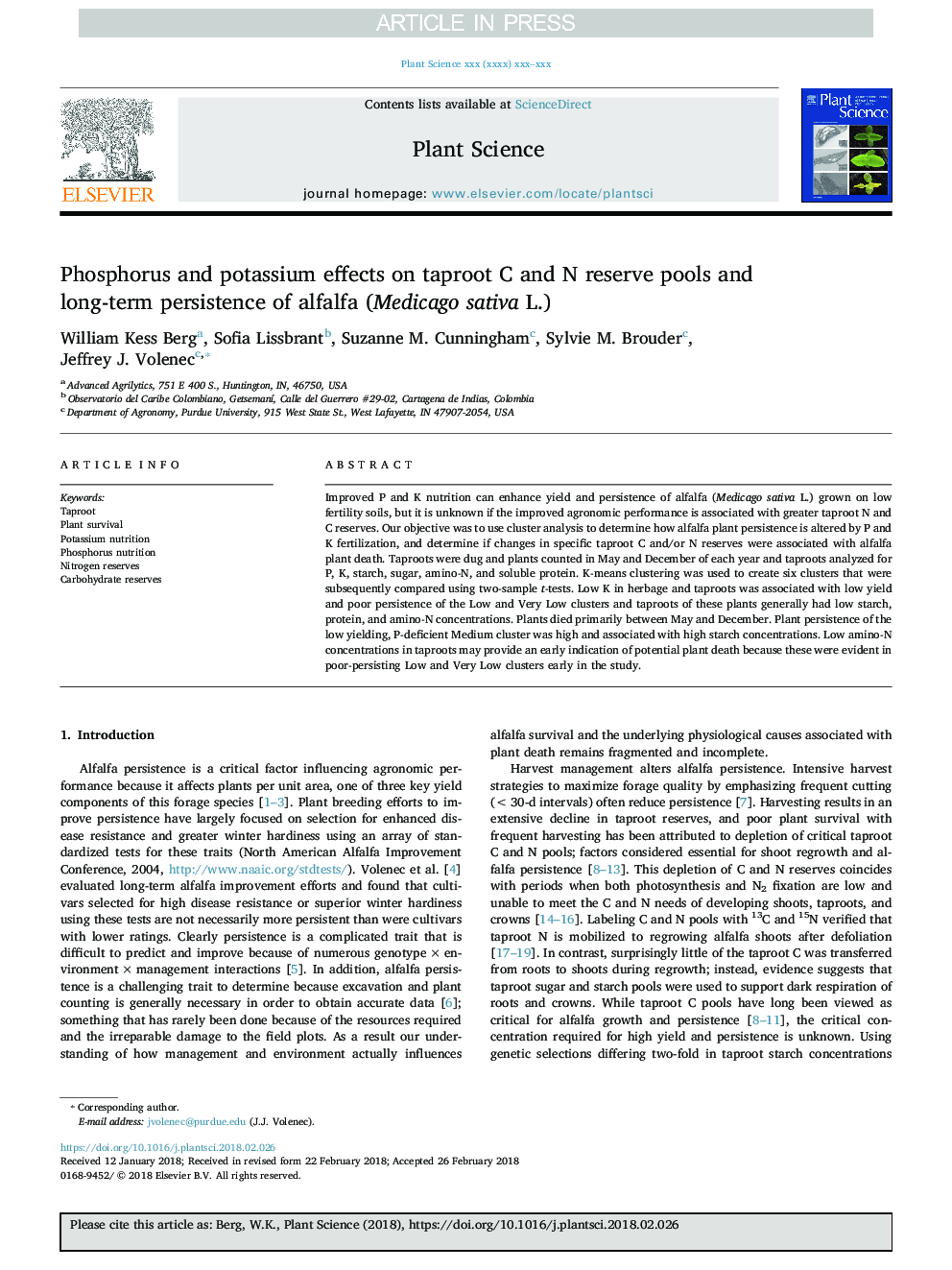| Article ID | Journal | Published Year | Pages | File Type |
|---|---|---|---|---|
| 8356575 | Plant Science | 2018 | 8 Pages |
Abstract
Improved P and K nutrition can enhance yield and persistence of alfalfa (Medicago sativa L.) grown on low fertility soils, but it is unknown if the improved agronomic performance is associated with greater taproot N and C reserves. Our objective was to use cluster analysis to determine how alfalfa plant persistence is altered by P and K fertilization, and determine if changes in specific taproot C and/or N reserves were associated with alfalfa plant death. Taproots were dug and plants counted in May and December of each year and taproots analyzed for P, K, starch, sugar, amino-N, and soluble protein. K-means clustering was used to create six clusters that were subsequently compared using two-sample t-tests. Low K in herbage and taproots was associated with low yield and poor persistence of the Low and Very Low clusters and taproots of these plants generally had low starch, protein, and amino-N concentrations. Plants died primarily between May and December. Plant persistence of the low yielding, P-deficient Medium cluster was high and associated with high starch concentrations. Low amino-N concentrations in taproots may provide an early indication of potential plant death because these were evident in poor-persisting Low and Very Low clusters early in the study.
Related Topics
Life Sciences
Agricultural and Biological Sciences
Plant Science
Authors
William Kess Berg, Sofia Lissbrant, Suzanne M. Cunningham, Sylvie M. Brouder, Jeffrey J. Volenec,
